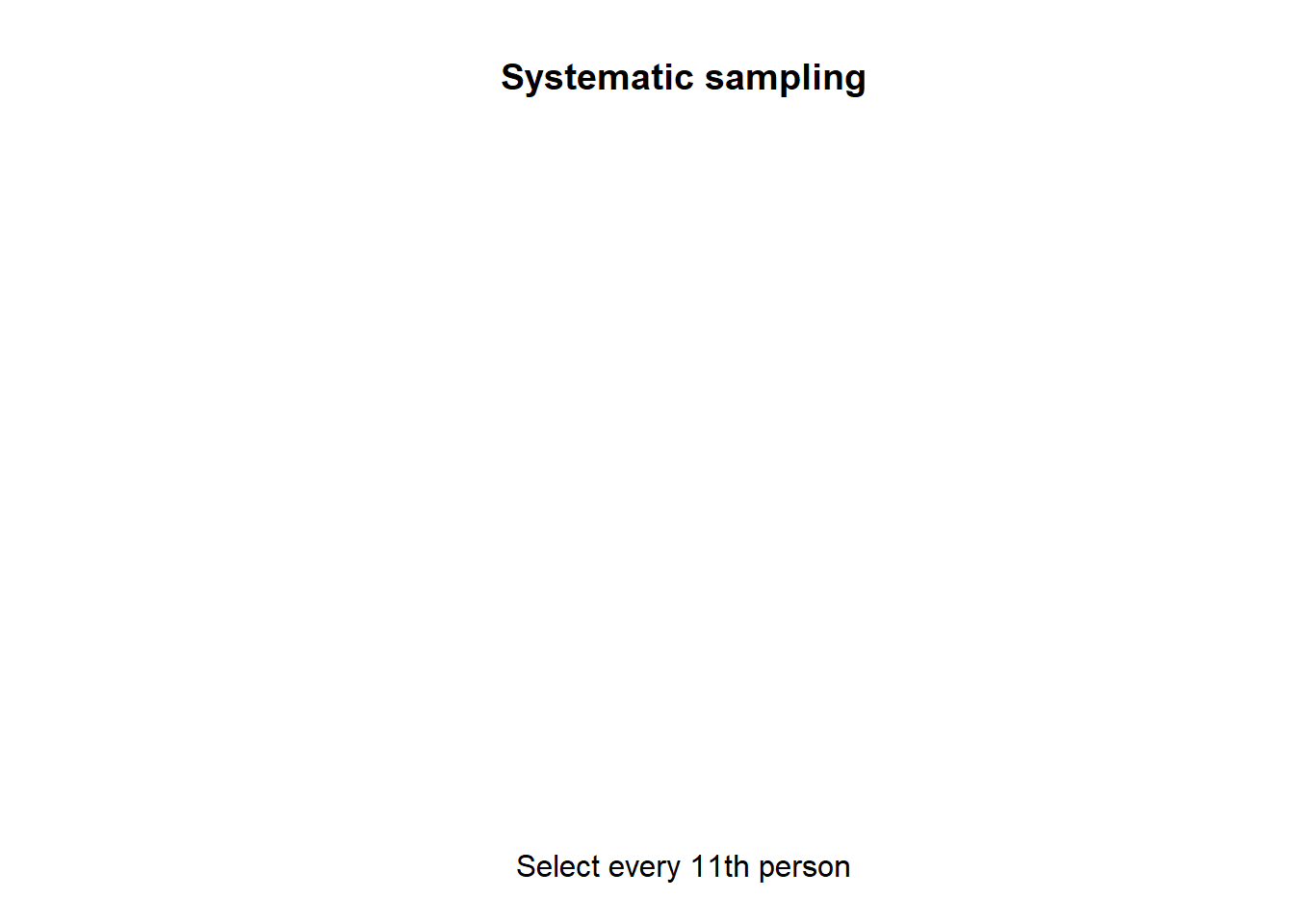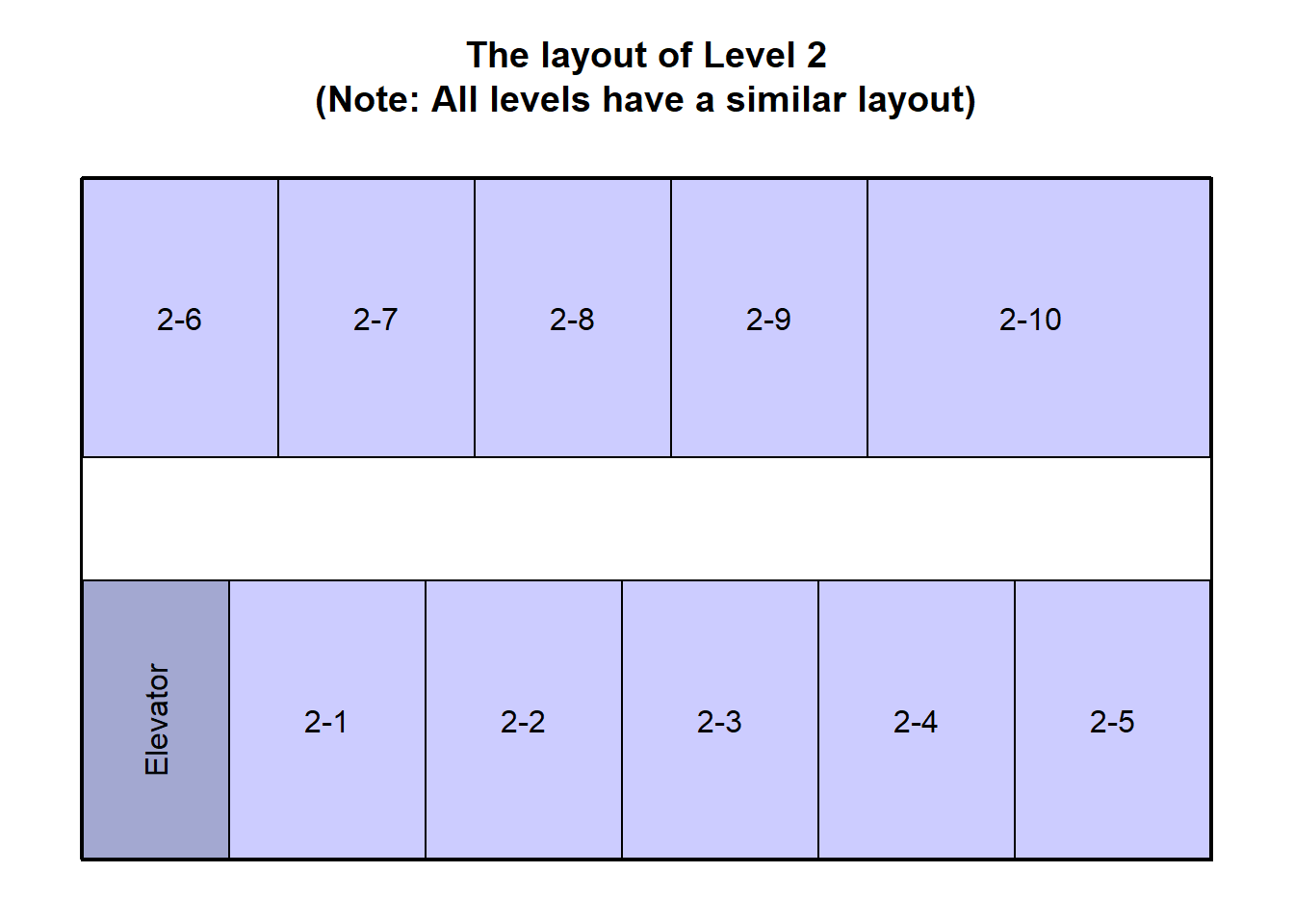1.5 (Optional) Systematic sampling
![]()
In systematic sampling, the first case is randomly selected; then, every (say) fifth element is selected thereafter.
In general, we say that every \(n\)th individual is selected.
Example 1.5 (Systematic sampling) Suppose for a particular study, a sample of 40 students in a particular course is needed.
If 441 students are enrolled, 40 students could be randomly selected, by choosing a number at random between 1 and \(441/40\) (approximately 11) as a starting point; suppose the random number selected is 9. The first student selected is the 9th person in the list (which may be ordered alphabetically, by student ID, or any other means).
Thereafter, every \(441/40\)th person, or 11th person, in the list is selected: people numbered 9, 20, 31, 42...
The animation below shows how a sample of 40 students could be selected from a class of 441 students using a systematic random sample of size 40, by starting at student number 9 and then talking every 11th person.

Care needs to be taken when using systematic samples to ensure a pattern is not hidden.
For example, consider a study where residents in a large, eight-level residential accommodation complex are to be visited and a survey administered. Each floor of the building has a similar layout (Fig. 1.2), with nine apartments per level.
If the researchers decide to systematically sample every tenth apartment, the very same apartment on each floor woud be chosen.
For example, suppose Apartments 1-10, 2-10, 3-10,... 8-10 were chosen. These apartments are all larger than all the other apartments. The residents of these apartments may be wealthier than the other residents, so the systematic sample will not be a representative sample of residents.
Figure 1.2: The layout of each level in an eight-storey apartment building; Level 2 is shown